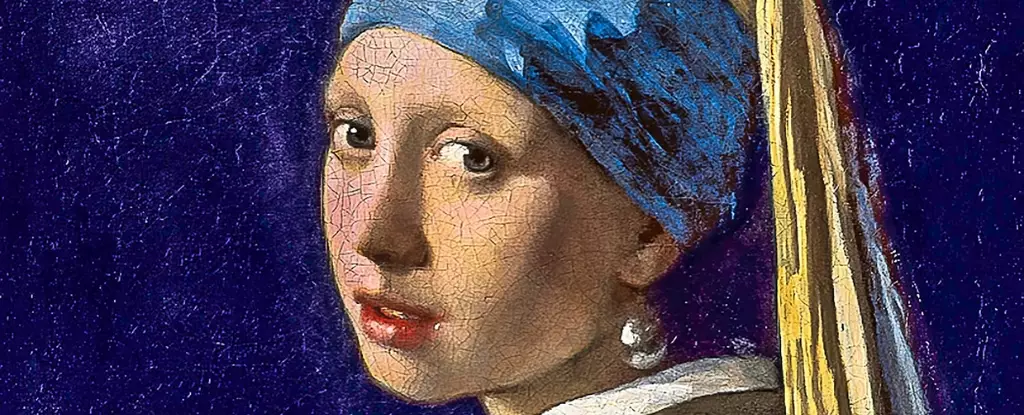Johannes Vermeer’s “Girl With a Pearl Earring” has transcended the boundaries of time to become one of the most recognized artworks in the world. Within the walls of the Mauritshuis museum in The Hague, this enigmatic portrait captivates viewers by evoking a sense of intrigue and beauty. Recent scientific studies have taken a deep dive into the reasons behind the painting’s magnetic allure by analyzing neurological responses in the human brain. This intersection of art and science sheds light on how our brain engages with visual stimuli, particularly in relation to this iconic piece.
The research conducted by neuroscientists at Neurensics uncovered a phenomenon they termed the “Sustained Attentional Loop.” This term describes the viewer’s compulsive journey through the painting. Beginning with a gaze fixed on the girl’s eye, the viewer is led seamlessly from her mouth to the gleaming pearl and back to her eye—this cyclical movement creates a fixation that encourages longer engagement with the painting compared to other artworks. Martin de Munnik, a researcher involved in the study, notes that this process compels attention in a manner that feels both involuntary and compelling. “You have to pay attention whether you want to or not,” he explains, emphasizing the painting’s unique ability to captivate its audience.
An intriguing aspect of the study was the revelation that the precuneus—a region associated with consciousness and self-referential thought—showed heightened activity when individuals gazed at the “Girl With a Pearl Earring.” This neurological engagement not only signifies that the painting prompts viewers to contemplate their personal identity but also suggests a universal connection to beauty. De Munnik pointed out that the longer one observes the subject, the more attractive she becomes, adding depth to our understanding of the painting’s charm. This finding opens the door for further inquiry into why certain art pieces, including Vermeer’s, resonate more deeply with audiences when compared to others.
The study also provided significant insights regarding the emotional responses elicited by original artworks versus reproductions. The emotional engagement experienced by viewers of the actual painting was found to be ten-fold when compared to that induced by a mere poster. This disparity highlights the essential nature of experiencing original pieces of art. Mauritshuis Director Martine Gosselink advocates for direct interaction with art saying, “It really helps to develop your brain,” underscoring the cognitive benefits that emerge from genuine engagement with creative works. The difference in experience is palpable, revealing the potency of original art in eliciting profound emotional and cerebral responses.
Vermeer’s distinct style contributes significantly to the painted narrative. Unlike many of his other works—where the subject may be engaged in activities such as writing or needlework—the “Girl With a Pearl Earring” establishes a connection by locking eyes with the observer. This moment of direct engagement complicates the typical passive viewer relationship; rather, it creates a dynamic interplay between the artwork and its audience. Gosselink notes that this profound connection is a pivotal factor that distinguishes this painting from Vermeer’s other masterpieces.
The groundbreaking nature of this research prompts exciting possibilities for further investigations into the neurological effects of viewing art. Gosselink and De Munnik have both expressed interests in exploring how other revered works—such as Leonardo da Vinci’s Mona Lisa—might provoke similar or different neural responses. Such inquiry could unveil additional layers to our understanding of art appreciation, potentially reshaping the narratives surrounding these iconic pieces. The overlap of neuroscience and art not only enriches our perception but also deepens our appreciation for the complexities of human creativity and cognition.
Johannes Vermeer’s “Girl With a Pearl Earring” is far more than a mere painting; it serves as a conduit to deeper understanding of human perception and emotional connection to art. Through the lens of neuroscience, we gain insights into why this artwork remains timelessly captivating, holding an irreplaceable spot within the realm of art history. The conversation between scientific research and artistic expression opens up a vibrant field of exploration, inviting both artists and viewers to engage more thoughtfully with the masterpieces that adorn our world.

Leave a Reply